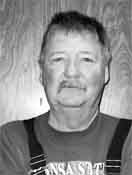 | Dr. William Morland graduated from Kansas State University in 1970 with a doctorate in veterinary medicine. He and his wife, Dr. Laura Morland, founded the hospital in 1974. Dr. Morland is a large-animal practitioner. He also owns the Flying M Ranch. He enjoys working with his own cattle and back grounding calves. His pets other than his cattle include two Cairn terrier named Bandit and Dandy. |
Animals, Reptiles & Insects
2013-02-01 08:39:09
What can a producer do to ensure that their calves this spring are immune to diseases?
A-First of all, extra attention to the mother cow prior of calving helps ensure a healthy calf and a return to normal, productive health as soon as possible. Proper nutrition and annual vaccinations will help boost immunity in cows and spike antibody levels in the colostrum. Optimizing antibodies in the colostrum transfers increased immunity to the calves.
The single, most important meal a calf will consume in its lifetime is the first feeding of colostrum. This meal is crucial for surviving both the first 24 hours and the first month when calf hood diseases are most common. In addition, quality colostrum feeding supports calf growth to optimize weaning weights and to reach breeding weight early.
Immediately after birth the calf's intestines have a unique property; the ability to absorb or transfer antibodies directly into the bloodstream. Antibodies are essential in preventing infectious diseases, and this is the calf's only means of acquiring immunity early in life. However, as hours pass the ability to absorb antibodies progressively decreases. Studies have shown that the efficiency of antibody absorption drops to about 50% by 6 hours of age and stops completely by 24 hours after birth. Colostrum must be fed as soon as possible after birth, ideally within an hour, and no later than 6 hours. If a calf is not suckling before 6 hours of age, it is recommended that it be tube-fed rather than allow more time to pass. When it is not possible to milk the cow immediately, a good quality colostrum replacer is an alternative to ensure the calf receives a timely first meal.
The amount of colostrum needed depends on the quality of the colostrum, size of the calf and method of feeding. As a rule, colostrum should be fed to 10% of the calf's body weight. For a 90-pound calf, this is about four quarts. An additional two to four quarts should be fed no later than 12 hours after calving. If tube feeding, the calf can easily be fed the larger volumes. Dystocia calves and those born during hot, humid weather have reduced ability to absorb antibodies and require a larger dose of colostrum.
The best quality colostrum can still deliver a mouthful of pathogens if a few precautions are taken to ensure a clean environment. Beef calves will do best if moved from the calving pen as soon as possible and be provided with clean pasture and protection from inclement weather.
Good luck with your calving season and I hope this discussion will help ensure healthy calves.


